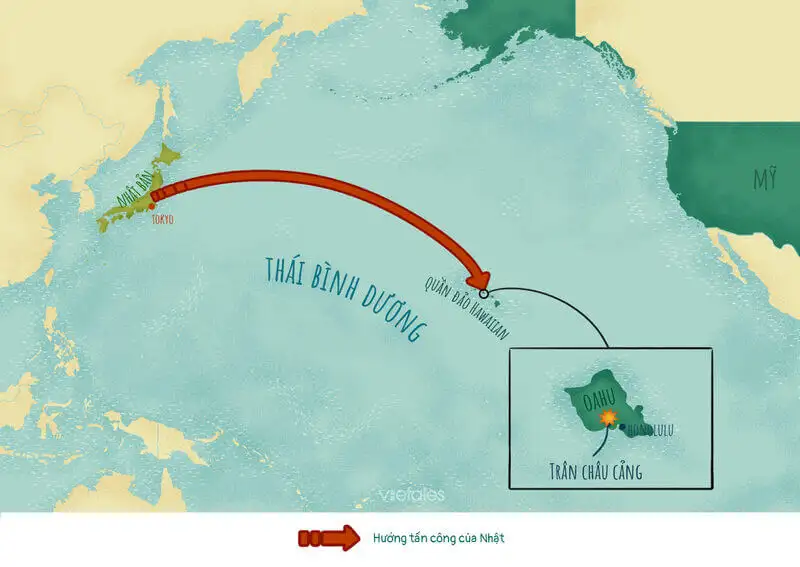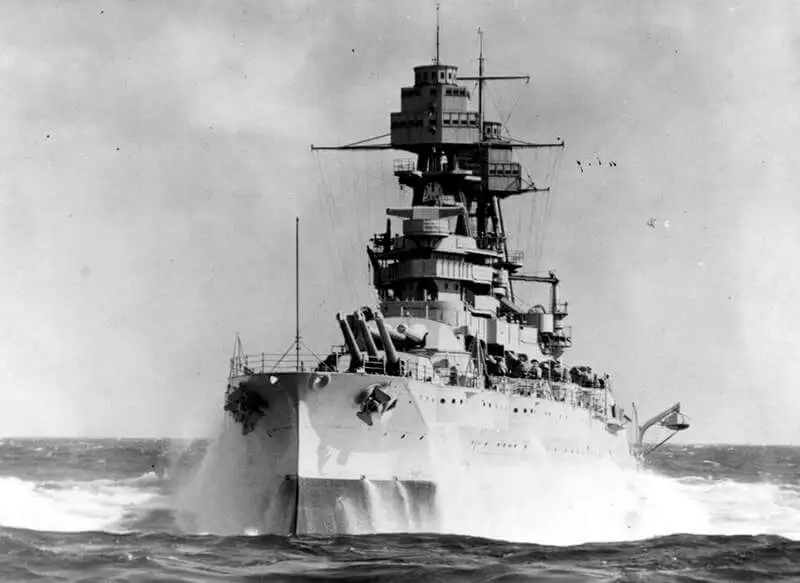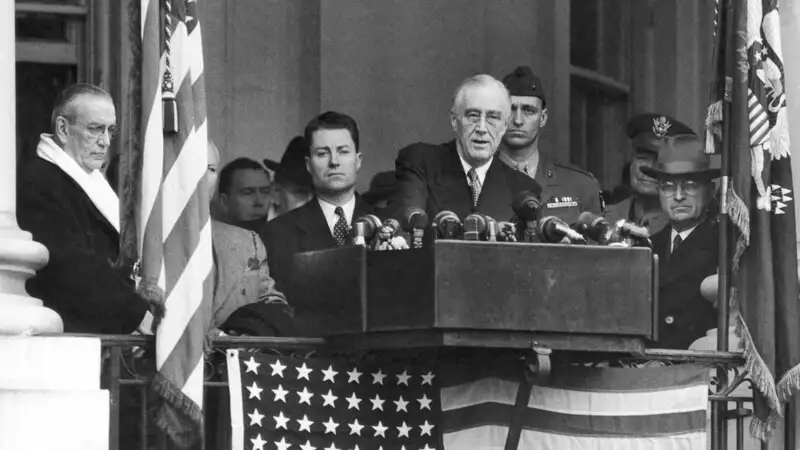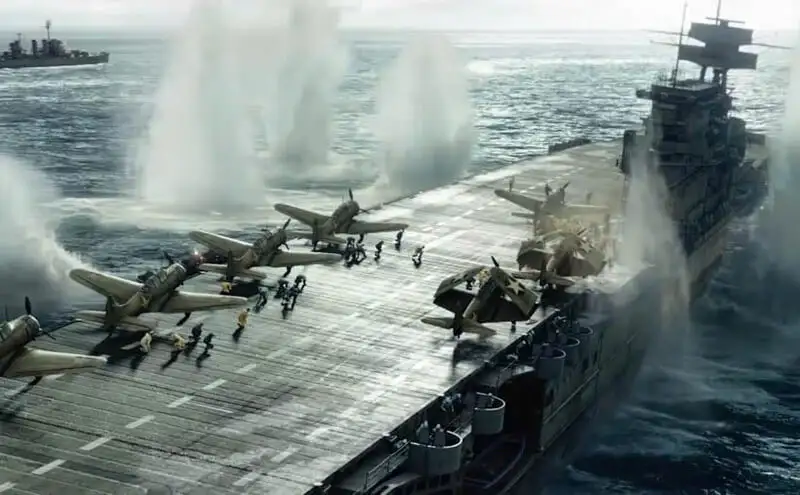Pearl Harbor, a naval base near Honolulu, Hawaii, suffered a surprise attack from Japan on December 7, 1941. In a single morning, nearly 20 American naval vessels, including eight battleships, and over 300 aircraft were destroyed or damaged. More than 2,400 people, including civilians, were killed, and approximately 1,000 were injured. The next day, President Franklin D. Roosevelt formally requested Congress to declare war on Japan. In this article, Pywar provides a comprehensive overview of the Pearl Harbor attack, its location, its consequences, and which side emerged victorious.
Japan and the Road to War
The attack on Pearl Harbor came as a surprise, but tensions between Japan and the United States had been building for decades prior.
The United States was particularly displeased with Japan’s increasingly aggressive stance toward China. The Japanese government believed that the only way to address their economic and population challenges was to expand into neighboring countries and control their import markets.
With this goal in mind, Japan declared war on China in 1937, leading to the Nanjing Massacre and numerous other atrocities.
In response to this aggression, U.S. officials imposed a series of economic sanctions and trade embargoes. They believed that without access to money and goods, especially essential supplies like oil, Japan would be forced to curb its expansionist ambitions.
However, these sanctions only hardened Japan’s resolve. Over months of negotiations between Tokyo and Washington, neither side yielded. War seemed inevitable.

- The Japanese military during the invasion of China in 1937, a milestone marking the beginning of the path to World War II. (Source: Collected)
Where Is Pearl Harbor?
Pearl Harbor, Hawaii, is located near the center of the Pacific Ocean, approximately 2,000 miles from the U.S. mainland and about 4,000 miles from Japan. No one believed Japan would initiate a war by attacking such remote islands as Hawaii.
Moreover, U.S. intelligence officials were confident that any Japanese attack would target one of the nearby European colonies in the South Pacific: the Dutch East Indies, Singapore, or Indochina.
Because American military leaders did not anticipate an attack so close to home, the naval facilities at Pearl Harbor were relatively lightly defended. Nearly the entire Pacific Fleet was moored around Ford Island in the harbor, and hundreds of aircraft were crowded together at nearby airfields.
For Japan, Pearl Harbor was an irresistible and vulnerable target.

- Pearl Harbor, Hawaii, situated near the center of the Pacific Ocean, approximately 2,000 miles from the U.S. mainland and 4,000 miles from Japan. (Source: Collected)
USS Arizona
Japan’s plan was straightforward: destroy the Pacific Fleet. By doing so, the United States would be unable to retaliate as Japanese forces expanded across the South Pacific. On December 7, after months of planning and preparation, Japan launched its attack.
Around 8 a.m., the skies over Pearl Harbor filled with Japanese aircraft. Bombs and bullets rained down on the ships moored below. At 8:10 a.m., a 1,800-pound bomb smashed through the deck of the battleship USS Arizona and detonated in its forward ammunition magazine. The ship exploded and sank, trapping more than 1,000 men inside.
Next, torpedoes pierced the hull of the battleship USS Oklahoma. With 400 sailors aboard, the Oklahoma lost balance, rolled over, and sank beneath the water.
In less than two hours, the surprise attack ended, and every battleship at Pearl Harbor—USS Arizona, USS Oklahoma, USS California, USS West Virginia, USS Utah, USS Maryland, USS Pennsylvania, USS Tennessee, and USS Nevada—suffered severe damage. (All except the USS Arizona and USS Utah were later salvaged and repaired.)

- The USS Arizona before it was sunk, a symbol of the heavy losses suffered by the U.S. Navy at Pearl Harbor. (Source: Collected)
Consequences of the Pearl Harbor Attack
Japan’s attack on Pearl Harbor crippled or destroyed nearly 20 American warships and more than 300 aircraft. Dry docks and airfields were also demolished. Most critically, over 2,000 people lost their lives.
However, Japan failed to completely neutralize the Pacific Fleet. By the 1940s, battleships were no longer the most critical warships; aircraft carriers had taken their place. Fortunately, on December 7, all of the Pacific Fleet’s carriers were absent from the base. Some had returned to the mainland, while others were delivering planes to garrisons on Midway and Wake Islands.
Furthermore, the attack on Pearl Harbor left the most vital onshore facilities—such as oil storage depots, repair shops, shipyards, and submarine docks—untouched. As a result, the U.S. Navy was able to recover relatively quickly from the assault.
How Many People Died at Pearl Harbor?
The attack on Pearl Harbor claimed the lives of 2,403 Americans, including sailors, soldiers, and civilians. Additionally, 1,178 others were injured. On the Japanese side, 129 soldiers were killed.
Half of the fatalities at Pearl Harbor occurred aboard the battleship USS Arizona. Today, the sunken vessel serves as a memorial honoring all Americans who perished in the attack.
“A Date Which Will Live in Infamy”
On December 8, shortly after the devastating attack on Pearl Harbor, President Franklin D. Roosevelt addressed a joint session of the U.S. Congress.
“Yesterday, December 7, 1941—a date which will live in infamy—the United States of America was suddenly and deliberately attacked by naval and air forces of the Empire of Japan.”
He continued, “No matter how long it may take us to overcome this premeditated invasion, the American people, in their righteous might, will win through to absolute victory. I believe I interpret the will of the Congress and of the people when I assert that we will not only defend ourselves to the uttermost but will make very certain that this form of treachery shall never endanger us again.”

- President Roosevelt declares “a date which will live in infamy,” marking a turning point as the United States enters World War II. (Source: Collected)
The U.S. Enters World War II
Following the attack on Pearl Harbor, the American public, for the first time after years of debate, united in their resolve to enter the war.
Japan had hoped to force the United States to lift its economic sanctions; instead, it thrust its adversary into a global conflict, ultimately leading to Japan’s first occupation by a foreign power.
Did You Know? The sole vote in Congress against declaring war on Japan came from Representative Jeannette Rankin of Montana. A committed pacifist who had also opposed U.S. entry into World War I, she stated, “As a woman, I can’t go to war, and I refuse to send anyone else.”
On December 8, Congress approved Roosevelt’s declaration of war against Japan. Three days later, Japan’s allies, Germany and Italy, declared war on the United States. Congress reciprocated by declaring war on these European powers. More than two years after the start of World War II, the United States officially joined the conflict.
Conclusion
Through this article, Pywar aims to provide a broad perspective on the Pearl Harbor attack and its aftermath. The war concluded with a U.S. victory and Japan’s defeat, marking the first time Japan was occupied by a foreign power. The attack resulted in over 2,400 American deaths, 1,178 injuries, and the destruction of nearly 20 naval vessels and over 300 aircraft. However, the survival of U.S. aircraft carriers and key infrastructure allowed the United States to recover swiftly and gain the upper hand in World War II.
Translated by: Le Tuan
Source: history.com – Pearl Harbor








